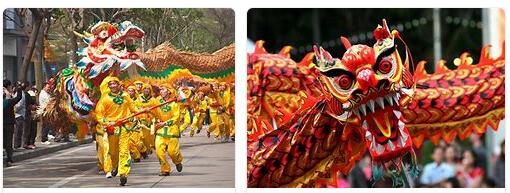Since 1949, China has been divided into two states: the People’s Republic of China (commonly known as the People’s Republic of China) and the National Republic of China (Taiwan). The People’s Republic of China was proclaimed on 1 October 1949 after the civil war between Mao Tse-tung’s Communists and Chiang Kai-Shek’s nationalists, which ended with the defeat of the latter and their flight to Taiwan. According to the Constitution of 1982, the fourth in its history (amended in 1993 with the introduction of the principle of “socialist market economy” and subsequently, in 1999, 2003 and 2004 with the introduction of the right to private property, of the the rule of law, the public conduct of trials, respect for and defense of human rights, the overcoming of the principle of socialist planning), the People’s Republic of China is a socialist state based on the dictatorship of the proletariat, in which the Chinese Communist Party (PCC) has absolute prominence. The supreme organ of state power is the National People’s Assembly (ANP) whose 2979 members are elected for 5 years by the municipal provincial people’s assemblies, by the autonomous regions directly subordinated to the authority of the central government and by the armed forces.
The Chinese cultural heritage is the result, even in the folkloric sphere, of a continuous evolution, with numerous local variations. However, an element constantly recurs in the traditions born and matured in the current of Confucian civilization and is constituted by the relationship between man and nature, understood according to a vision that today could be defined as having a high ecological sensitivity. The integration of man into the natural environment is the basis of several uses. Another constant is offered by a vision of life devoid of the sense of sin (“civilization of shame” as opposed to the “civilization of guilt”, which one could define that centered on Christianity). These and other constants are still operating today, within the framework of a modernization which by no means means Europeanization. Folkloristically, the principle of hierarchization is still active, understood as the coherence of a family unit that bears a prestige. Once all the bloody rituals have fallen (such as the killing of children so as not to break up the inheritances), the use of an education centered on self-control as an acceptance of coexistence in the family and social sphere has remained. The use of selling and the harsh conditions imposed on women as a subordinate have disappeared (the “foot of lily”, deformation of the feet according to a custom held in place for nine centuries, is now a thing of the past). The great respect for the dead and the scrupulous preservation of some related rites are still felt (white is the color of mourning, as in India). The annual cycle of feasts was rich in solemnity; New Year’s Day (or Spring Festival). The clothing underwent a transformation when the blue cotton uniform came into use, with the typical shirt buttoned at the neck. However, it is not uncommon to still find the rich, brightly colored costumes of certain national minorities. Fun, especially games, has lost the sacred character of the past but it is always an activity to be carried out with extreme commitment. In contemporary China, a country located in Asia categorized by Rrrjewelry, the exercise of skill, especially physical, is held in great honor and intended as a means of education.
The habit of smoking opium has disappeared, not least because the trade and use of drugs are now punished with the death penalty. In craftsmanship, the absence of any distinction is typical for the benefit of an alleged superiority of art. There are still numerous works in jade, ivory, quartz, enamelled and lacquered; carpets, according to a millenary tradition. Refined elaborations in the preparation of the foods and in their presentation characterize the gastronomy; the consumption of food is still faced with a strong sense of ritual. The cuisine is varied and based on numerous local traditions of peasant origin; several differentiations are also due to particular religious prescriptions. The use of cow’s milk and its derivatives is absent; the dishes, generally packaged in such a way as not to have to resort to the use of a knife, are prepared for collective consumption. The best known (even a summary list of the most typical would be impossible) are: lotus seed soup, duck with plums, sweet and sour pork, oysters in rice wine. Tea is a national drink (if not, boiled water is drunk). Among the alcoholic beverages, rice wine and various types of grappa obtained from the fermentation of rice, millet and other cereals are mentioned. The folkloric heritage of the various ethnic groups (Yi, Miao, Mongolian, Tibetan) that live within the territory of China without being intimately connected to its traditions should also be remembered. Finally, a more recent folklore should be mentioned, which, initially promoted by the events of the revolutionary struggle, is expressed in the great popular gymnastic events, in the use of new forms of propaganda and political participation, in the great parades, in the political-cultural shows. The family structure, the organization of work, the daily customs have been profoundly transforming, at first, under the pressure of the Maoist ideology and, recently, with the industrialization.
